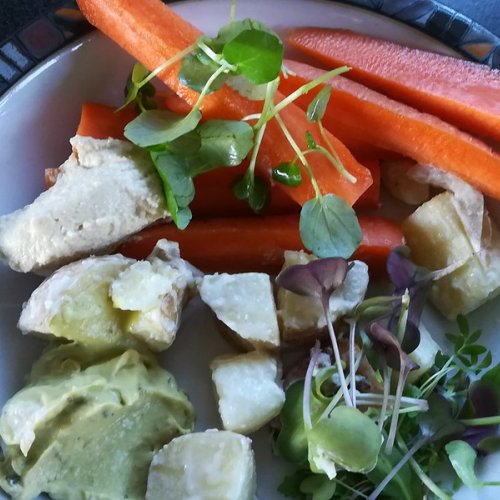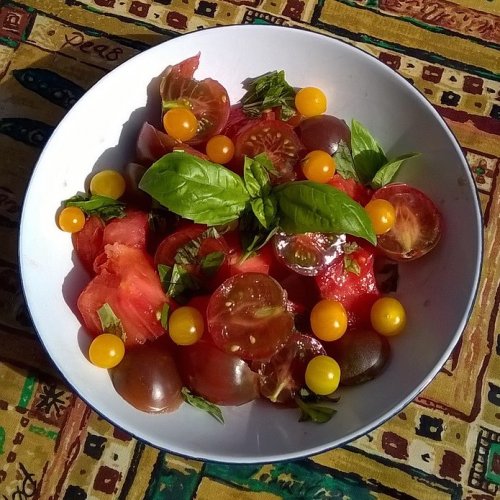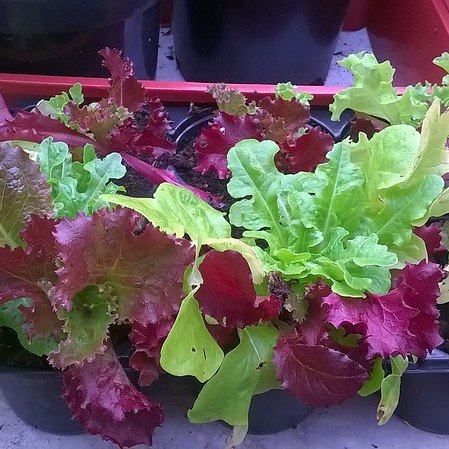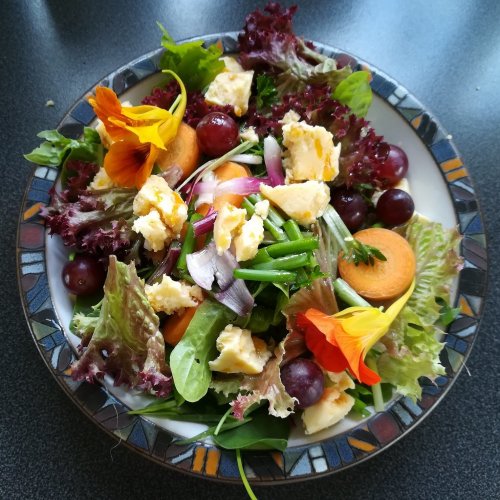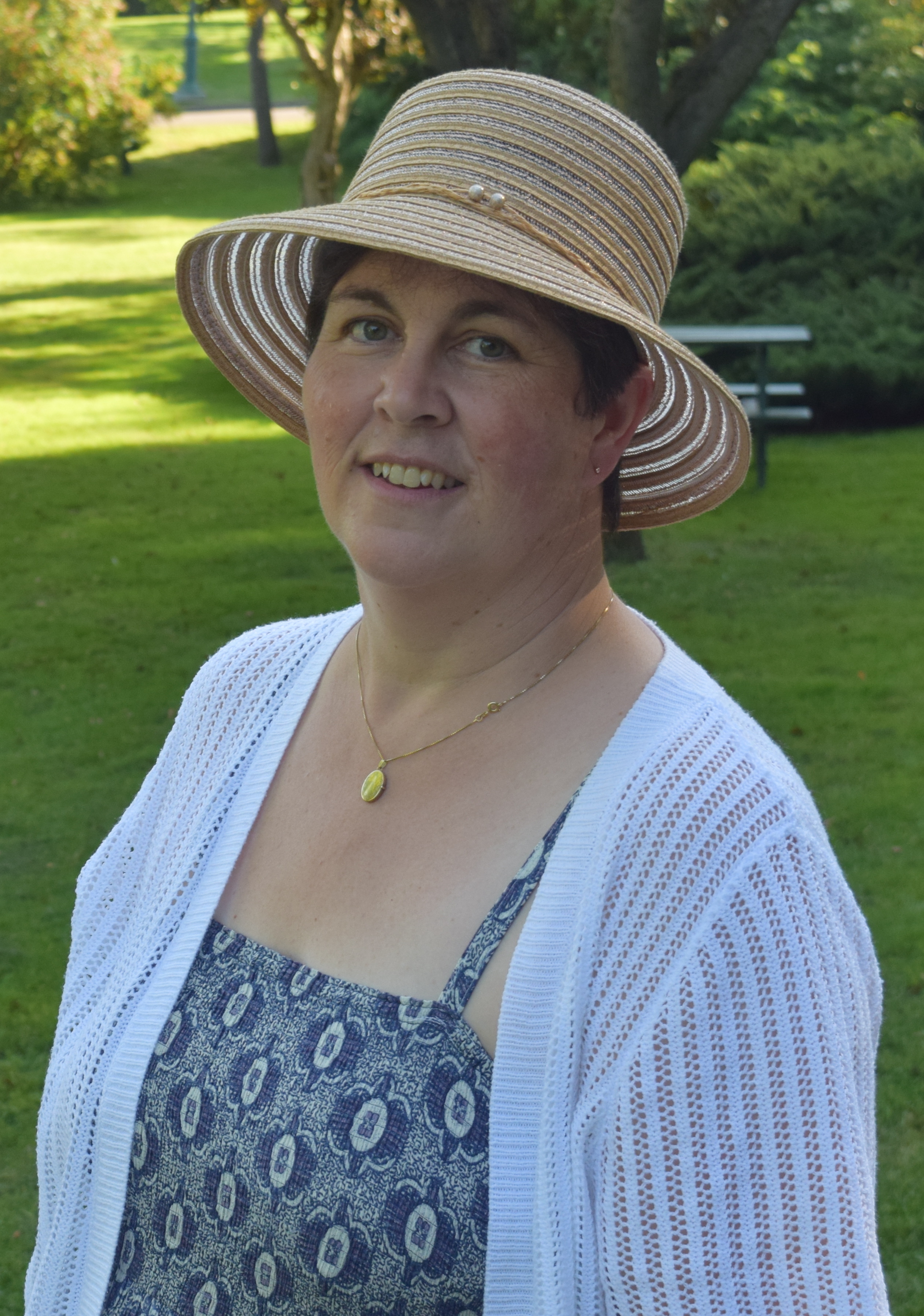When I was a nurse I hated the preaching tone of so much of the health education that was part of the job. My inner need for joy and fun rebelled at participating in the gloomy gospel of calorific sins, low fat, no sugar, 5 a day. This good Catholic girl, who enjoyed a wee dram and a natter in the pub after Mass, had no time for a Calvinistic mortification of the flesh. My food faith lay in an appreciation of good, basic ingredients and the mental health food properties of a slice of cake. As a former domestic science teacher and wannabe land army girl (the war ended too soon for her) my mother taught me the joy of eating something that you have grown yourself, cooked yourself and the condiment that is sharing what you have created with others.
In my 40s, having crashed out of nursing a physical and emotional wreck, I eventually found myself working for a charity, Garden Organic, running a volunteer programme. Our volunteers were people who shared my passion for food growing and shared that passion through mentoring new growers. We found them everywhere, from schools and nurseries through housing association ‘sink estates’, to asylum seekers’ accommodation and sheltered housing for elderly people.
I hadn’t followed this path on purpose and so was amazed to find the work healing the wounds inflicted by nursing. It was almost like turning full circle and returning to my Edinburgh University training days, with the focus on holistic care. I used my core nursing skills of communication, organisation, teaching, advocacy, to help people develop a new skill through which they enjoyed eating their 5-a-day, and often many more.
There are few things in life as deeply satisfying as eating your own tomato from the vine in a sunny summer greenhouse, warm, fragrant and bursting with flavour. With my volunteers I found something to top that: watching the reaction of someone we had supported, enjoying their own tomato after a lifetime of drippy, tasteless supermarket water-bombs.
That phase in my life is finished now and I miss those wonderful experiences of watching people grow, but I am turning all that I have learned inwards to heal myself for a change.
When I began working with a nutritionist last autumn, I was nervous and somewhat sceptical, waiting for the usual barrage of do's and don’ts, waiting to be told that I must change my diet to exclude anything that gave me joy. What a surprise to find that the bulk of the advice not only involved eating some of things that I love most, but also spending more time on my favourite activities – food growing, preserving, fermenting, pickling. I was also advised to slow down and make time to enjoy my meals, to focus on the enjoyment of the moment instead of stuffing it down whilst thinking of the next item on my ‘To Do’ list.
Granted, drastically reducing my carbs was a challenge that only the prospect of a life of pain and stiffness could have underpinned. However, replacing my morning rush through a bowl of Weetabix with the prescription of a leisurely, high protein cooked breakfast was heaven. Within days I found that I no longer had the mad seesawing blood sugar that sent me hunting for snacks. I didn’t need to fill up on more carbs to stave off the cold, jittery, yawn-filled tiredness of more than three hours without food. Even better, I found myself playing with just how long I could hold off from breakfast, until the peak realisation one lunchtime that I had managed to forget breakfast altogether. Cue some slight back-peddling as this is not an advisable goal.
Conquering my carbs helped with the other, much bigger, mountain to climb - cutting out gluten for several months to see how much it contributed to my symptoms. For a former micro-baker this was really asking for the moon, but again, the prospect of remaining in my premature dotage was a wonderful incentive. I won’t go into the details of how I managed this here, and certainly won’t dip into the expletive filled world of experimenting with delusional gluten-free baking books, dazzlingly white, nutrient-free flours and unpleasantly gritty, coated and dry mouths. Suffice it to say, I managed largely by reducing my carbs and so avoiding the foods that required gluten free substitutes. My body learned to take its energy from fats and to fill up with proteins and veg.
Much more exciting was the challenge to eat at least 50 different foods a week. This took me back to a food growing training day I attended years ago, which identified the 5-a-day mantra as an arbitrary target, the highest that its pessimistic authors thought they could get away with. Our trainer told us that it is far better to focus on eating as many different types and colours of food, cooked in as many ways as possible, to release all the different nutrients. For health-policy gurus this is not an appealingly simple message; far better to risk people eating only 5 apples a day than having to face the even bigger challenge of changing a society that has lost its knowledge of growing and cooking food.
With this 50 a week advice, just as my breakfast had transformed into something self indulgent and delicious, lunch became an adventure, beginning with a wander around the garden asking ‘What can I pick today?’ I am lucky being a gardener, in that my garden was already full of perennial plants like sorrel, which comes back year after year with little or no attention. It’s sharp lemony greenness underpinned my lunch through much of the late autumn and again in the early spring, when little else grows.
I added to this watercress, divided and planted from a supermarket pot into a large, covered container in October. Coriander seeds, broadcast in August and dormant in the drought and heat of the summer, popped up in November, to be quickly covered by a cold-frame. Their feathery fronds supplied zing in my salad well into February. As winter turned to spring my containers sprouted and I added the rich aniseed of French tarragon and curly, dark, iron-rich parsley. With summer I can now add edible flowers and the vibrant colours of marigold, chive, nasturtium and borage.
Back in the kitchen I could turn to my fascination with fermentation, contrasting the greens with a rich purple sauerkraut and dressings made with home made fruit vinegars. Our bodies rely on the help of billions of micro-organisms to digest and make available the nutrients we need. Home fermented foods are a far tastier and more satisfying way to find these probiotics than chugging back yet more expensive capsules.
Each week I look for new and interesting lunch items, chopping in cubes of cheeses, cold meats, eggs, nuts, dried fruits and seeds. I make a couple of small pots of coleslaw each week, with root veg: celeriac, blackberry vinegar, pumpkin oil and raisin, carrot and orange with sunflower seeds. Not only is every lunch different from the day before, but every mouthful is different, calling my attention to my meal not my next task. The quick results, deliciousness and fun involved in this positive approach to nutrition mean that it is no hardship to changing my lifestyle. Now, when I come across yet another poster nagging about 5-a-day I laugh. I am eating a rainbow every day and loving it.
Why not have a go at planting something simple like a windowsill salad, parsley or sorrel to supplement your meals? Have a look at my activities pages for some ideas.
Take it slow though and don't launch into too many new projects at once. I have been adding new plants and recipes a little at a time for decades.
